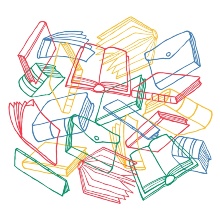Here we list the publications which have resulted from work of members of this group (since 2020).
2023
- S. Gravelle, S. Haber-Pohlmeier, C. Mattea, S. Stapf, C. Holm, and A. Schlaich, “NMR Investigation of Water in Salt Crusts: Insights from Experiments and Molecular Simulations,” Langmuir, vol. 39, Art. no. 22, May 2023, doi: 10.1021/acs.langmuir.3c00036.
- S. Gravelle, S. Haber-Pohlmeier, C. Mattea, S. Stapf, C. Holm, and A. Schlaich, “Preprint: NMR Investigation of Water in Salt Crusts: Insights from Experiments and Molecular Simulations,” Jan. 2023, doi: 10.26434/chemrxiv-2023-6dml7.
- S. Gravelle, D. Beyer, M. Brito, A. Schlaich, and C. Holm, “Assessing the validity of NMR relaxation rates obtained from coarse-grained simulations of PEG-water mixtures,” Jun. 2023, doi: 10.26434/chemrxiv-2022-f90tv-v4.
- S. Bolik et al., “The possible role of lipid bilayer properties in the evolutionary disappearance of betaine lipids in seed plants.,” bioRxiv, 2023, doi: 10.1101/2023.01.24.525350.
- V. Artemov et al., “The Three-Phase Contact Potential Difference Modulates the Water Surface Charge,” The Journal of Physical Chemistry Letters, vol. 14, Art. no. 20, May 2023, doi: 10.1021/acs.jpclett.3c00479.
- H. Jäger, A. Schlaich, J. Yang, C. Lian, S. Kondrat, and C. Holm, “A screening of results on the decay length in concentrated electrolytes,” Faraday Discussions, Feb. 2023, doi: 10.1039/d3fd00043e.
2022
- S. Gravelle, D. Beyer, M. Brito, A. Schlaich, and C. Holm, “Preprint: Reconstruction of NMR Relaxation Rates from Coarse-Grained Polymer Simulations,” Dec. 2022, doi: 10.26434/chemrxiv-2022-f90tv.
- S. Liese, A. Schlaich, and R. R. Netz, “Dielectric Constant of Aqueous Solutions of Proteins and Organic Polymers from Molecular Dynamics Simulations,” The Journal of Chemical Physics, 2022, doi: 10.1063/5.0089397.
- V. Artemov et al., “Preprint: Elucidating contact electrification mechanism of water,” 2022.
- S. Gravelle, C. Holm, and A. Schlaich, “Transport of thin water films: from thermally activated random walks to hydrodynamics,” The Journal of Chemical Physics, 2022, doi: 10.1063/5.0099646.
2021
- A. Schlaich, D. Jin, L. Bocquet, and B. Coasne, “Electronic screening using a virtual Thomas--Fermi fluid for predicting wetting and phase transitions of ionic liquids at metal surfaces,” Nature Materials, Nov. 2021, doi: 10.1038/s41563-021-01121-0.
- I. Tischler, A. Schlaich, and C. Holm, “The Presence of a Wall Enhances the Probability for Ring-Closing Metathesis: Insights from Classical Polymer Theory and Atomistic Simulations,” Macromolecular Theory and Simulations, vol. 30, Art. no. 2, 2021, doi: 10.1002/mats.202000076.
- G. Gonella et al., “Water at charged interfaces,” Nature Reviews Chemistry, vol. 5, Art. no. 7, Jul. 2021, doi: 10.1038/s41570-021-00293-2.
2020
- J. C. F. Schulz, A. Schlaich, M. Heyden, R. R. Netz, and J. Kappler, “Molecular interpretation of the non-Newtonian viscoelastic behavior of liquid water at high frequencies,” Phys. Rev. Fluids, vol. 5, Art. no. 10, Oct. 2020, doi: 10.1103/PhysRevFluids.5.103301.
- P. Loche, C. Ayaz, A. Wolde-Kidan, A. Schlaich, and R. R. Netz, “Universal and Nonuniversal Aspects of Electrostatics in Aqueous Nanoconfinement,” The Journal of Physical Chemistry B, vol. 124, Art. no. 21, 2020, doi: 10.1021/acs.jpcb.0c01967.


